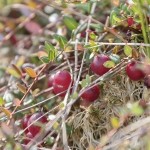 Peat moss, derived from sphagnum moss, is a crucial component to making soil healthier and more conducive to grass, shrubbery and groundcover growth. As the organic conditioner is laid and decays, it benefits the soil with not only favorable pH conditions, it promotes other physical conditions allowing for ideal growing conditions.
Peat moss, derived from sphagnum moss, is a crucial component to making soil healthier and more conducive to grass, shrubbery and groundcover growth. As the organic conditioner is laid and decays, it benefits the soil with not only favorable pH conditions, it promotes other physical conditions allowing for ideal growing conditions.
To understand what peat moss, you must understand where it comes from. Peat moss is actually a dried moss, which may come as little surprise. But before decaying and drying, peat moss is a living moss called sphagnum moss. Sphagnum actually consists of 120 species, all of which can hold between 10-30 times their dry weight in water. Because of this, it can thrive in drier conditions. Even after it is dried and used as peat moss, sphagnum still holds these properties- part of the effectiveness as a soil conditioner.
As a soil conditioner, peat moss increases soil’s capacity to hold water and nutrients thanks to its natural capillary characteristics. Especially useful in very sandy soil, where water retention is a challenge, peat moss helps neutralize overly basic soil, absorbing and distributing such elements as calcium and magnesium as hydrogen. What’s more, sphagnum has very low rates of decay and generates nutrients and beneficial properties for plants over an extended period.
Dried sphagnum moss is also used as an insulating material, particularly in planting grass seed. It not only prevents frost exposure to encourage seedling growth, it prevents wind migration. Once dried peat moss is spread over fresh grass seed and exposed to moisture, as aforementioned holds a massive amount of water. This weighs it down over the seed, greatly limiting the effects of wind strong enough to disrupt the seed. And because the taste of peat is not appealing to birds, it overshadows any appeal they may have toward the grass seed. Otherwise this grass seed is vulnerable and easy picking for our avian friends.
